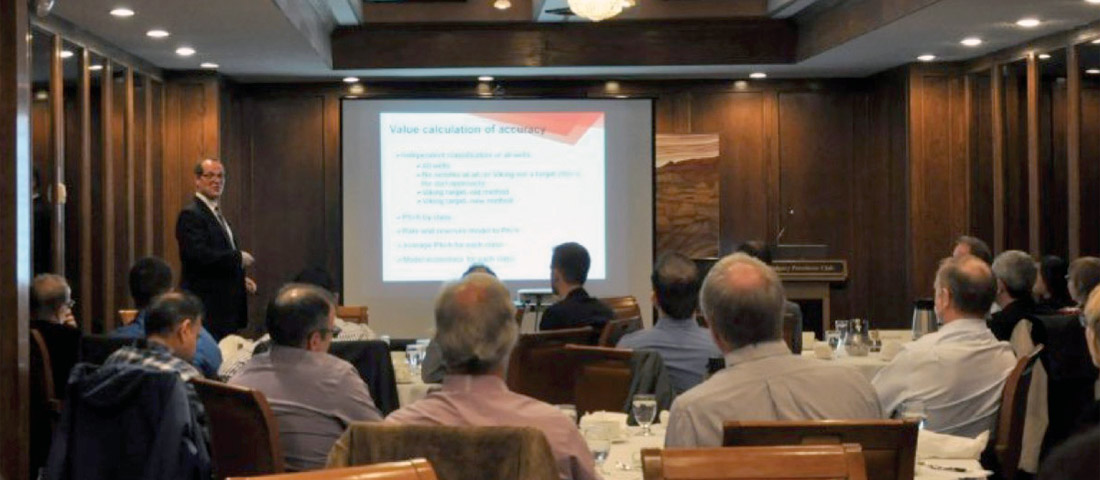
With the mission of developing strong, integrated teams of geoscientists and engineers to improve safety, due diligence, and economic success in the oil industry, members of the CSEG’s Value of Integrated Geophysics Committee (VIG) prepared and delivered their pitch to the Society of Petroleum Engineers (SPE) in April 2016. Breakfast talks were presented by Lee Hunt, David Gray and John Duhault at the Calgary Petroleum Club.
Lee Hunt was first up to bat. His talk, “A Critical Point”, opened on a philosophical note, showing a path through a forest and over a bridged stream, which was a metaphor with several meanings. One meaning was that the bridge was best crossed through a rational and integrated teamwork, while another meaning suggested that a relatively small investment in seismic data might lead to better exploration and production (E&P) outcomes. He showed how seismic can improve horizontal drilling accuracy, and how it might be useful in potentially inferring economically relevant geologic and engineering variables such as reservoir properties, stress, or fractures. He also explicitly described the importance of inductive reasoning to determine the most optimal integrated technical strategy, particularly emphasizing the need to use complimentary independent inferences to increase the reliability of technical advice. Lee summarized his ideas by discussing the application of Bayes’ probability theorem, to improve outcomes by scientifically choosing the best path through the E&P forest.
Up next, Dave Gray gave a hands-on talk entitled “Demystifying Geophysics”. He used Slinkies and other teaching props to explain complex geophysical concepts to the engineering audience. Dave whisked back and forth between a combination of props, well-illustrated diagrams, and complex geological interpretations of seismic data to make his points. He discussed relationships between time, offset, velocity, density, and depth, using seismic, logs and check-shots. He dived into explanations about S-waves and geomechanics to explain AVO effects and zones of potential wellbore failure. From there, he moved to seismic attributes and inferred pay zones. Dave’s overarching message was that seismic generally adds value at low cost by reducing uncertainty, but seismic must be done early in the game.
John Duhault brought the team home with his practical and often humorous presentation, “Applied Geophysics for Engineers Using Case Histories”. He re-enforced Lee and Dave’s earlier themes, presenting detailed cases about operators’ challenges with corporate assets. Geophysical techniques, integrated with geology and engineering, helped increase return on capital, chance of success, and the development of capitally efficient drilling programs. Examples and work flows were from oil sands, heavy oil, unconventional tight oil and gas, as well as conventional oil and gas projects. Completion geophysics examples using microseismic and tilt-meters with downhole microseismic filled out the morning presentations.
The Value of Integrated Geophysics Committee











Share This CSEG Report